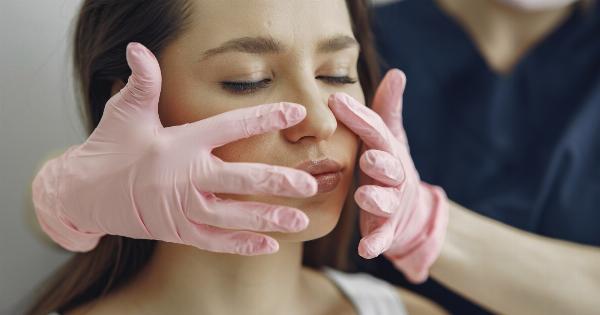When it comes to skincare, one of the most important aspects is preventing the occurrence of skin ulcers.
Skin ulcers are open sores that can develop on the skin’s surface due to various factors such as prolonged pressure, friction, or a compromised blood supply. These ulcers can be painful, difficult to heal, and may even lead to serious complications if not properly managed.
Understanding Skin Ulcers
Skin ulcers can occur in different parts of the body, but they are most commonly found on areas that are exposed to pressure and friction, such as the heels, ankles, hips, and tailbone.
They can also develop in individuals who have poor circulation or are bedridden for extended periods.
It is essential to understand the different types of skin ulcers:.
Pressure Ulcers
Pressure ulcers, also known as bedsores or decubitus ulcers, are caused by prolonged pressure on the skin. When the blood flow is restricted in a specific area, the skin becomes vulnerable to damage.
Pressure ulcers are commonly seen in individuals who are immobile or bedridden. It is crucial to regularly reposition these individuals to relieve pressure and prevent the occurrence of ulcers.
Friction Ulcers
Friction ulcers develop due to repeated rubbing or friction against rough surfaces. These ulcers commonly occur in athletes, particularly those involved in activities that require repetitive motions such as running or cycling.
Properly fitting footwear and protective clothing can help minimize friction and reduce the risk of these ulcers.
Diabetic Ulcers
Diabetic ulcers are a common complication of diabetes. High blood sugar levels can affect the nerves and blood vessels, leading to impaired sensation and reduced blood flow to the extremities.
This combination makes diabetics more susceptible to developing ulcers, particularly on their feet. Regular foot inspections, maintaining appropriate blood sugar levels, and wearing comfortable shoes are essential preventive measures for diabetics.
Tips for Preventing Skin Ulcers
Now that we have a better understanding of the different types of skin ulcers, let’s explore some essential tips for preventing their occurrence:.
1. Maintain Good Hygiene
Cleanliness is crucial for preventing skin ulcers. Regularly wash your skin with mild soap and warm water to remove any bacteria or dirt. Pat your skin dry gently to avoid excess friction.
2. Moisturize Your Skin
Keeping your skin adequately moisturized helps maintain its elasticity and prevents dryness, which can lead to skin breakage. Apply a suitable moisturizer regularly, especially to areas prone to developing ulcers.
3. Protect Vulnerable Areas
If you know certain areas of your skin are prone to developing ulcers, take proactive steps to protect them. This can include using cushioning materials, wearing appropriate clothing, or using protective barriers.
4. Maintain a Healthy Diet
Eating a balanced diet rich in vitamins and minerals is vital for overall skin health. Adequate nutrition promotes skin regeneration and strengthens its natural defense mechanisms, reducing the likelihood of ulcer formation.
5. Stay Active
Regular physical activity helps maintain good blood circulation, which is essential for preventing skin ulcers. Try to incorporate exercises that target the areas prone to ulcer development to strengthen the surrounding muscles and tissues.
6. Avoid Prolonged Pressure
If you have limited mobility or spend long hours sitting or lying down, it’s crucial to relieve pressure on vulnerable areas regularly. Change positions frequently and use specialized cushions or supports to distribute pressure evenly.
7. Practice Good Foot Care
Proper foot care is especially important for individuals at risk of diabetic ulcers. Inspect your feet daily for any signs of redness, swelling, or skin breaks. Keep your feet clean, well-moisturized, and wear comfortable, well-fitting shoes.
8. Manage Underlying Conditions
If you have any underlying health conditions such as diabetes, vascular diseases, or autoimmune disorders, it is crucial to manage them effectively. Keeping these conditions under control reduces the risk of developing skin ulcers.
9. Seek Medical Attention for Wounds
If you notice any signs of skin damage or the formation of an ulcer, seek medical attention promptly. Early intervention can prevent further complications and ensure proper wound management.
10. Follow Proper Wound Care
If you have an existing skin ulcer, it’s essential to follow proper wound care techniques. This may include cleaning the wound, applying medicated dressings, and seeking professional advice for ongoing management.
Conclusion
Preventing the occurrence of skin ulcers requires a proactive approach towards skincare and maintaining overall health.
By implementing the tips mentioned in this ultimate guide, you can significantly reduce the risk of developing skin ulcers and their associated complications. Remember, early prevention and proper wound management play a crucial role in maintaining healthy, radiant skin.






























